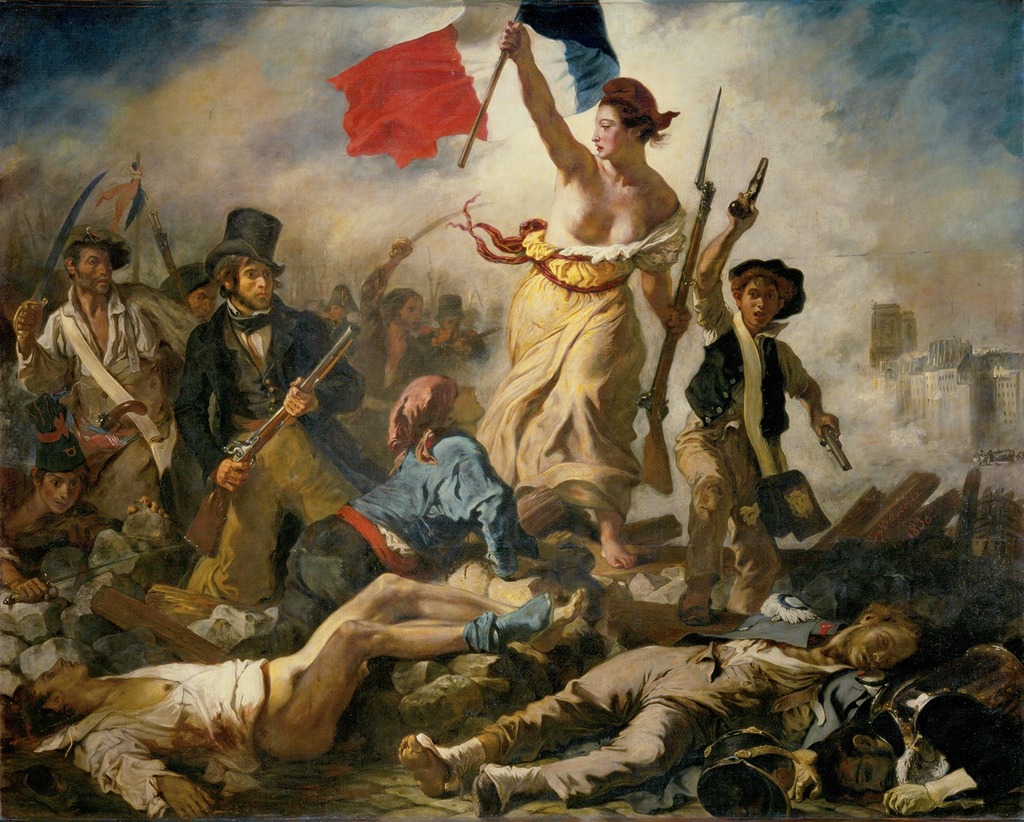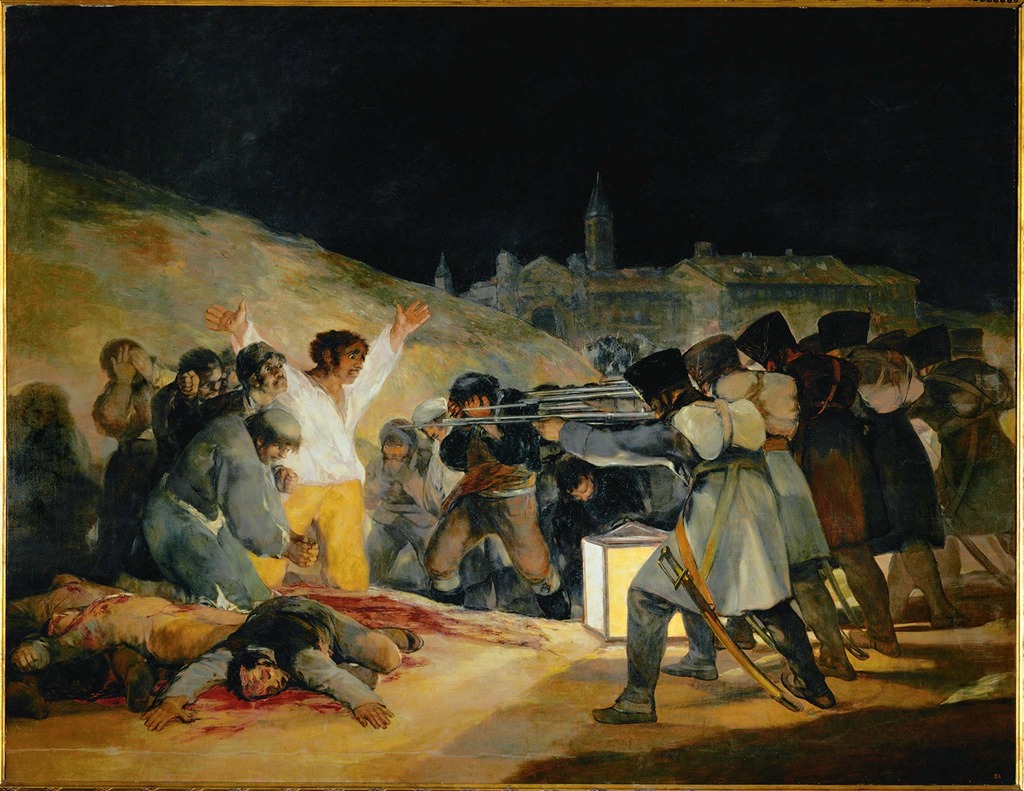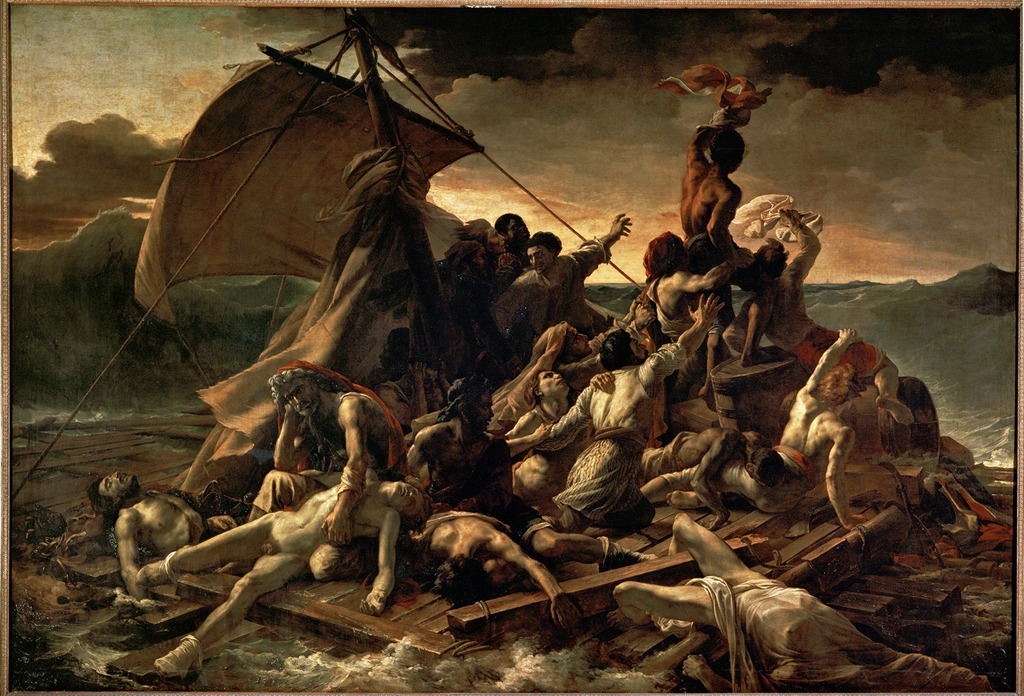Chapter 11.4: Romanticism, 1800-1850
Generally characterized by a highly imaginative and subjective approach, emotional intensity, and a dreamlike or visionary quality. Romantics believe the human spirit’s nobility and strength can triumph against all odds. They believe in social justice and defend the weak, exalt all feeling, and love Nature.
Some of the Artists involved: Edmund Burque, William Blake, Lord Byron, Francisco de Goya, Theodore Gericault, Eugene Delacroix, Samuel Palmer, John Constable, J.M.W Turner, Claude Lorraine.
The first marker of a French Romantic painting may be the facture, meaning the way the paint is handled or laid on to the canvas. Viewed as a means of making the presence of the artist’s thoughts and emotions apparent, French Romantic paintings are often characterized by loose, flowing brushstrokes and brilliant colors in a manner that was often equated with the painterly style of the Baroque artist Rubens. In sculpture artists often used exaggerated, almost operatic, poses and groupings that implied great emotion. This approach to art, interpreted as a direct expression of the artist’s persona—or “genius”—reflected the French Romantic emphasis on unregulated passions. The artists employed a widely varied group of subjects, including the natural world, the irrational realm of instinct and emotion, the exotic world of the “Orient,” and contemporary politics.
Images and Videos

Delacroix, Liberty Leading the People (5:58)

Art historical analysis (painting), a basic introduction using Goya’s Third of May (10:40)

Gericault, Raft of the Medusa (6:36)
Media Attributions
- Figure 1. Eugene Delacroix, Liberty Leading the People, 1830, oil on canvas. (Musee de Louvre; Image source: Erich Lessing/ART RESOURCE, N.Y. via ArtStor. Used with permission. For educational use only)
- Figure 2. Francisco de Goya, The Third of May 1808, 1814, oil on canvas. (Museo del Prado; Image source: Erich Lessing/ART RESOURCE, N.Y. via ArtStor. Used with permission. For educational use only)
- Figure 3. Theodore Gericault, Raft of the Medusa, 1819, oil on canvas. (Musee de Louvre; Image source: Erich Lessing/ART RESOURCE, N.Y. via ArtStor. Used with permission. For educational use only)
Candela Citations
- A beginner's guide to Romanticism. Authored by: Dr. Beth Harris and Dr. Steven Zucker. Provided by: Smarthistory. Retrieved from: https://smarthistory.org/a-beginners-guide-to-romanticism/. License: CC BY-NC-SA: Attribution-NonCommercial-ShareAlike
- Eugu00e8ne Delacroix, Liberty Leading the People. Authored by: Dr. Bryan Zygmont. Provided by: Smarthistory. Retrieved from: https://smarthistory.org/delacroix-liberty-leading-the-people/. License: CC BY-NC-SA: Attribution-NonCommercial-ShareAlike
- Francisco Goya, The Third of May, 1808. Authored by: Christine Zappella. Provided by: Smarthistory. Retrieved from: https://smarthistory.org/goya-third-of-may-1808/. License: CC BY-NC-SA: Attribution-NonCommercial-ShareAlike
- Thu00e9odore Gu00e9ricault, Raft of the Medusa. Authored by: Dr. Beth Harris and Dr. Steven Zucker. Provided by: Smarthistory. Retrieved from: https://smarthistory.org/theodore-gericault-raft-of-the-medusa/. License: CC BY-NC-SA: Attribution-NonCommercial-ShareAlike

